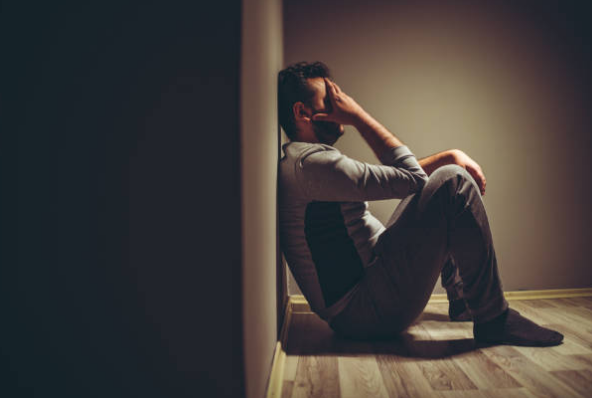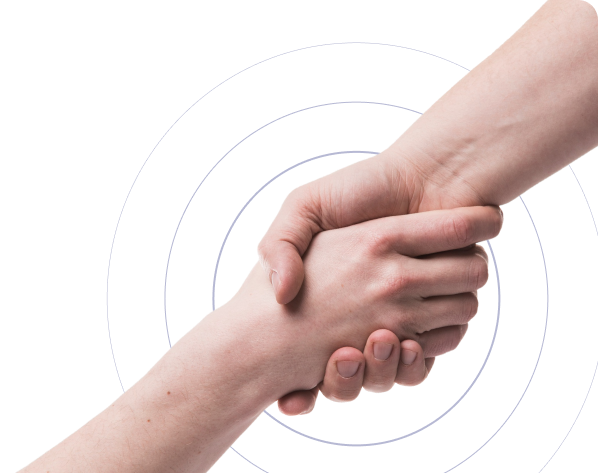Stages of Depression Overview
Depression is a complex mental health condition that affects millions of people worldwide. Understanding its stages can provide valuable insights into its progression and help individuals seek appropriate support and treatment.
In this comprehensive overview, we will explore the five stages of depression, delving into the symptoms that may manifest at each stage. From the early stages characterized by mild symptoms to the more severe stages that can significantly impact daily functioning, we will shed light on the emotional, cognitive, and physical signs to watch out for.
Furthermore, we will examine the various causes and contributing factors that can lead to depression. By understanding these underlying factors, we can better understand why depression occurs and identify potential triggers that may exacerbate the condition. Lastly, we will delve into the effective treatments available for depression.
Depression Stage of Grief
Depression is often recognized as one of the stages of grief. When individuals experience a significant loss or traumatic event, they may undergo a grieving process involving several stages. One of these stages is depression.
During the depression stage of grief, individuals may experience intense sadness, a profound sense of emptiness, and a loss of interest or pleasure in activities they once enjoyed. They may withdraw socially, have difficulty sleeping or eating, and struggle with feelings of hopelessness and worthlessness. This stage is characterized by deep mourning and a sense of profound loss.
Seeking support from friends, family, or mental health professionals can be beneficial during this stage. Therapeutic interventions, such as grief counseling or therapy, can help individuals navigate the complex emotions associated with grief and find healthy coping mechanisms. It’s crucial to remember that healing from grief takes time, and everyone’s journey is different.
5 Stages of Depression
A general overview of five common emotional stages individuals may experience while navigating depression.
- Denial or Numbness: In this stage, individuals may experience a sense of emotional detachment or numbness. They might deny or downplay their depressive symptoms, attempting to maintain a semblance of normalcy in their lives.
- Anger or Frustration: As depression sets in, individuals may experience frustration, irritability, or anger. They may question why they feel this way or direct their anger toward themselves, others, or external circumstances.
- Bargaining or Seeking Solutions: During this stage, individuals may try to find ways to alleviate their depression. They may make promises to themselves or seek external solutions, hoping to regain their sense of well-being. This can involve attempts to change their lifestyle, seek alternative treatments, or make deals with themselves to overcome their depressive symptoms.
- Depression or Despair: This stage represents the depth of the depressive experience. Individuals may feel overwhelming sadness, a loss of interest in activities, difficulty concentrating, changes in appetite or sleep patterns, and an overall sense of hopelessness. It’s during this stage that professional help is often sought to address the severity of symptoms.
- Acceptance or Recovery: In this final stage, individuals begin to accept their depression and actively engage in seeking support and treatment. They may work with mental health professionals, explore therapy options, and make lifestyle changes to promote recovery. While complete recovery is the ultimate goal, acceptance of the condition and actively pursuing effective strategies can lead to significant improvement in overall well-being.


Skip To:
Learn More:
- 5 Stages of Depression: Symptoms, Causes, and Effective Treatments
- Crippling Depression, Definition, Symptoms, and Treatment
- Smiling Depression, Symptoms, Treatment, and Test
- 5 Signs of Depression in Men, What Depression Looks Like
- Atypical Depression, Overview Symptoms, Treatments, and Diagnosis
- 7 Telltale Signs You Have High Functioning Depression
- What Are The Common Signs Of Depression In Women?
- 11 Signs Your Antidepressant Dose is Too Low
- Unipolar Depression, Definition, Symptoms, & Treatment
- What Is Situational Depression? Symptoms, Causes, and Treatment
- What Does Depression Feel Like? Symptoms & Warning Signs
Depression Fact Sheet
Definition: Depression is a common mental health disorder characterized by persistent sadness, loss of interest or pleasure in activities, and a range of physical and cognitive symptoms. It affects how a person thinks, feels, and functions daily.
Prevalence: Depression is a global health concern, affecting people of all ages and backgrounds.
Symptoms: Common symptoms of depression include persistent sadness, hopelessness, loss of interest in activities, changes in appetite and weight, sleep disturbances, low energy levels, difficulty concentrating, and thoughts of self-harm or suicide.
Risk Factors: Depression can be influenced by various factors, including genetics, brain chemistry, trauma, chronic medical conditions, certain medications, substance abuse, and significant life events such as loss or relationship problems. Women may be at a higher risk due to hormonal fluctuations
Impact: Depression can have a significant impact on an individual’s quality of life, affecting their relationships, work or school performance, physical health, and overall well-being. It can also increase the risk of other health problems, including cardiovascular diseases.
Treatment: Depression is a treatable condition. Treatment options may include psychotherapy (such as cognitive-behavioral therapy), medication (such as antidepressants), or a combination of both. Lifestyle modifications, social support, and self-care practices are essential to manage depression.
Breaking the Stigma: Depression is not a sign of weakness or a character flaw. It is a medical condition that requires understanding, compassion, and support. By promoting open conversations, raising awareness, and challenging stigmas associated with mental health, we can create a more supportive environment for individuals affected by depression.
End the Emotional Pain. Get Your Life Back.
Feeling Depressed, Anxious or Struggling with Mental Health Illness? Get Safe Comfortable Mental Health Dual Diagnosis High-Quality Therapy From Counselors That Care. Begin Your Recovery Now.
Hotline: (509) 348-4077

Depression Statistics
Understanding the stages of depression and the prevalence of this mental health condition is crucial in addressing its impact on individuals and society as a whole. Depression is a common and serious mental disorder that affects millions of people worldwide. By examining the stages of depression from a statistical perspective, we can gain valuable insights into its prevalence, demographic patterns, and the burden it places on individuals and healthcare systems.
21 million
An estimated 21.0 million adults in the United States had at least one major depressive episode. This number represented 8.4% of all U.S. adults.
Source: National Institute on Mental Health
10.5%
The prevalence of major depressive episodes was higher among adult females (10.5%) than males (6.2%).
Source: National Institute on Mental Health
17.0%
The prevalence of adults with a major depressive episode was highest among individuals aged 18-25 (17.0%).
Source: National Institute of Mental Health
Causes of Depression
- Biological Factors: Imbalances in brain chemistry and neurotransmitters, such as serotonin and norepinephrine, may play a role in depression. Genetic factors can also contribute to an individual’s susceptibility to depression.
- Environmental Factors: Certain life events, such as trauma, loss, abuse, or significant stressors like financial difficulties or relationship problems, can trigger or exacerbate depression. Chronic exposure to adverse environments, including a dysfunctional family, social isolation, or ongoing stress, may increase the risk as well.
- Psychological Factors: Negative thinking patterns, low self-esteem, a history of trauma, or certain personality traits, such as perfectionism or a tendency to ruminate, may contribute to the development or persistence of depression.
- Medical Conditions: Certain medical conditions, such as chronic pain, chronic illnesses, hormonal imbalances, or neurological disorders, can increase the risk of developing depression.
- Medications or Substance Abuse: Some medications, such as certain types of beta-blockers or corticosteroids, can potentially trigger depressive symptoms. Substance abuse, including alcohol or drug use, is also associated with an increased risk of depression.
What are the Stages of Depression?
The concept of stages in depression is not universally agreed upon within the field of psychology and psychiatry. However, there are some frameworks that attempt to describe the progression or varying intensity of depressive symptoms. One commonly referenced model is the “stage model” proposed by psychiatrist and researcher Dr. David Kupfer, which outlines four stages of depression. The stages are as follows:
- Stage 1: Mild depressive symptoms: This stage typically involves mild symptoms that may be transient or intermittent. Individuals may experience feelings of sadness, low energy, changes in sleep or appetite, and a loss of interest in previously enjoyed activities. However, they can still manage daily functioning and may not meet the diagnostic criteria for a major depressive disorder.
- Stage 2: Moderate depressive symptoms: In this stage, depressive symptoms become more persistent and pronounced. Individuals may experience a greater impact on their daily life, such as difficulties with work or relationships. Feelings of sadness and hopelessness may intensify, and self-esteem may decrease. It’s common to seek professional help at this stage.
- Stage 3: Severe depressive symptoms: This stage involves severe and pervasive symptoms that significantly affect an individual’s functioning. Daily activities become challenging, and individuals may struggle to maintain personal hygiene, attend work or school, or engage in social interactions. Suicidal thoughts may arise, and it is essential to seek immediate professional help.
- Stage 4: Treatment-resistant depression: This stage refers to a prolonged and severe form of depression that does not respond well to standard treatments. It may persist despite attempts at various therapies, medications, and interventions. Individuals with treatment-resistant depression often require specialized care and may benefit from alternative treatment options, such as electroconvulsive therapy (ECT) or transcranial magnetic stimulation (TMS).
Not everyone’s experience of depression fits neatly into these stages, and individuals may exhibit different symptoms or progress through them in a different order. Additionally, depression is a complex and multifaceted condition, and other models and frameworks exist that offer alternative perspectives on its stages or subtypes.
Get Help. Get Better. Get Your Life Back.
Searching for Accredited Dual Diagnosis Mental Health Centers Near You?
Even if therapy failed previously, or are in the middle of a difficult crisis, we stand ready to support you. Our trusted behavioral health specialists will not give up on you. When you feel ready or just want someone to speak to about counseling alternatives to change your life call us. Even if we cannot assist you, we will lead you to wherever you can get support. There is no obligation. Call our hotline today.
FREE 24/7 Dual Diagnosis Mental Health Services HotlineDepression after the Honeymoon Stage
Depression after the honeymoon stage is a term used to describe a phase that some individuals may experience in their journey through depression. It involves a shift from the initial stages of depression, often characterized by denial or milder symptoms, to a deeper and more pronounced depressive state.
Similar to the stages of grief, which include the depression stage, the stages of depression itself can vary in terms of intensity, duration, and the specific symptoms experienced. While there is no universally agreed-upon set of stages, understanding the general progression can provide insights into the different emotional and psychological states individuals may go through.
When discussing depression after the honeymoon stage, we consider the initial phase of depression as the “honeymoon stage” characterized by denial or milder symptoms, followed by a transition into a deeper state of depression. This shift may involve a sense of hopelessness, persistent feelings of sadness, changes in appetite or sleep patterns, loss of interest, and difficulties in daily functioning.
Understanding the stages of depression, including the depression stage of grief, can help individuals and their support networks recognize and address the evolving nature of depression.
First-class Facilities & Amenities
World-class High-Quality Mental Health Services & Behaviroal Health Substance Abuse Treatment
Rehab Centers TourRenowned Mental Health Centers. Serene Private Facilities. Inpatient Rehab Programs Vary.
Mental Health Helpline: (509) 348-4077Proven recovery success experience, backed by a Team w/ History of:
15+
Years of Unified Experience
100s
5-Star Reviews Across Our Centers
10K
Recovery Success Stories Across Our Network
- Low Patient to Therapist Ratio
- Comprehensive Dual-Diagnosis Treatment
- Complimentary Family & Alumni Programs
- Coaching, Recovery & Development Events
- Comfortable Onsite Medical Detox Center
Depression Stage of Grief Definition
The depression stage of grief can involve a range of emotional, cognitive, and physical symptoms. Individuals may feel a sense of emptiness, experience changes in appetite or sleep patterns, have difficulty concentrating, lack energy, and may isolate themselves from others. It’s important to note that these symptoms may vary among individuals, and not everyone will experience them in the same way or order.
While the depression stage of grief shares some similarities with clinical depression, it is a normal response to loss and should not be pathologized unless it becomes prolonged or significantly impairs daily functioning. Grief is a unique and individual process, and it is essential to allow oneself to move through the stages at their own pace, seeking support from loved ones or professional help when needed.
Job Loss Depression Stages
Job loss can be a significant life event that can trigger a range of emotional responses, including stages of depression and stages of grief. While there is no universally agreed-upon set of stages specifically for job loss-related depression, it can be helpful to consider the broader stages of depression and grief as a framework for understanding the emotional experience.
- Denial: Initially, individuals may deny or struggle to accept the reality of job loss. They may experience shock or disbelief, finding it difficult to comprehend the situation and its impact on their lives. Denial can serve as a coping mechanism to temporarily shield individuals from the full emotional weight of the loss.
- Anger: As reality sinks in, individuals may experience anger or frustration. They may direct these emotions toward themselves, their former employer, or external factors. Feelings of injustice, resentment, or a sense of being treated unfairly can arise during this stage.
- Bargaining: To regain control or reverse the situation, individuals may bargain. They might contemplate what they could have done differently or negotiate with themselves, hoping for a resolution or an alternative outcome. Bargaining can involve seeking new job opportunities, reevaluating career choices, or making personal commitments to overcome challenges.
- Depression: Job loss can lead to profound sadness, hopelessness, and despair. This stage may involve feelings of worthlessness, self-doubt, or a loss of identity tied to the job. Individuals may experience a lack of motivation, withdrawal from social interactions, changes in appetite or sleep patterns, and other symptoms associated with depression.
- Acceptance: Eventually, individuals may reach a stage of acceptance. This does not mean they are completely unaffected by the job loss, but rather they come to terms with the reality of their situation. They begin to focus on healing, exploring new opportunities, and rebuilding their lives, recognizing that job loss does not define their worth or prospects.
World-class, Accredited, 5-Star Reviewed, Effective Mental Health Dual Diagnosis Programs. Complete Integrated Inpatient Rehab with Free Post Discharge Therapy Planning.
Hotline: (509) 348-4077End the Emotional Pain Rollercoaster. Gain Stability & Happiness Through Recovery Treatment. Start Mental Health Counseling Today. Get Free No-obligation Guidance by Behaviroal Health Specialists Who Understand Mental Health Recovery.
Treatment at We Level Up Washington Behavioral Health Center
Various treatments are available for treating the stages of depression, and the most appropriate treatment option depends on the individual’s specific needs and the severity of their depression. Here are some common treatment approaches:
- Psychotherapy: Also known as talk therapy, psychotherapy involves working with a trained therapist to explore and address the underlying causes and triggers of depression. Cognitive-behavioral therapy (CBT) and interpersonal therapy (IPT) are two widely used and evidence-based psychotherapy for depression.
- Medication: Antidepressant medications, such as selective serotonin reuptake inhibitors (SSRIs) or serotonin-norepinephrine reuptake inhibitors (SNRIs), can help alleviate depressive symptoms by balancing brain chemistry. Medications are typically prescribed and monitored by a psychiatrist or a healthcare provider.
- Self-Help Strategies: Engaging in self-help strategies can complement professional treatment. This may include practicing stress reduction techniques, incorporating regular exercise into your routine, getting sufficient sleep, maintaining a balanced diet, and avoiding substance abuse.
- Lifestyle Modifications: Making positive changes in lifestyle habits can benefit mood and overall well-being. This may involve establishing a regular sleep schedule, engaging in enjoyable activities, socializing with supportive individuals, and reducing stress through relaxation techniques.
- Support Groups: Joining support groups or participating in group therapy can provide a sense of community, validation, and shared experiences, which can be helpful for individuals with depression. Support groups can be in-person or online.
- Alternative and Complementary Therapies: Some individuals may benefit from alternative or complementary therapies such as acupuncture, yoga, mindfulness meditation, or herbal supplements. However, consulting with a healthcare professional before pursuing these approaches is essential.
Popular Stages of Depression FAQs
-
Are there stages of depression?
While there is no universally agreed-upon set of stages for depression, some professionals may recognize different phases or patterns of symptoms in individuals.
-
How many stages of depression are there?
The number of stages of depression is not universally agreed upon, as depression is a complex and individualized condition.
Watch How to Improve Mental Health? 8 Steps & Tips for Maintaining Your Mental Wellbeing. Find Top Mental Health Tips & Anxiety Tips Advice from a Therapist.
Experience Transformative Recovery at the We Level Up Treatment Center.
See our authentic success stories. Get inspired.
Get the help you deserve.



Start a New Life
Begin with a free call to a behavioral health treatment advisor. Learn more about our dual-diagnosis programs. The We Level Up treatment center network delivers recovery programs that vary by each treatment facility. Call to learn more.
- Personalized Care
- Caring Accountable Staff
- World-class Amenities
- Licensed & Accredited
- Renowned w/ 5-Star Reviews
We’ll Call You
Search We Level Up WA Mental Health Stages of Depression Topics & Resources
Sources
- American Psychiatric Association. (2013). Diagnostic and statistical manual of mental disorders (5th ed.). Arlington, VA: American Psychiatric Publishing. Learn More: stages of depression
- Depression. (2018).
nimh.nih.gov/health/topics/depression/ Learn More: What does depression feel like? / Depression Symptoms Learn More: stages of depression - Depression medicines. (2019).
fda.gov/consumers/free-publications-women/depression-medicines Learn More: stages of depression - O’Donnell ML, et al. (2019). Adjustment disorder: Current developments and future directions.
mdpi.com/1660-4601/16/14/2537 What does depression feel like? / Depression Symptoms Learn More: stages of depression - What is PTSD? (2020).
psychiatry.org/patients-families/ptsd/what-is-ptsd Learn More: stages of depression - Depression. (2017).
nami.org/About-Mental-Illness/Mental-Health-Conditions/Depression Learn More: stages of depression - IsHak WW, et al. (2018). Pain and depression: A systematic review.
pubmed.ncbi.nlm.nih.gov/30407234/ Learn More: stages of depression - Israel L. (2022). Personal interview.
- Ostergaard L, et al. (2018). Low on energy? An energy supply-demand perspective on stress and depression.
sciencedirect.com/science/article/abs/pii/S0149763418300812 Learn More: stages of depression - Steiger A, et al. (2019). Depression and sleep.
mdpi.com/1422-0067/20/3/607/htm?from=article_link Learn More: stages of depression - Vidal-Ribas P, et al. (2021). How and why are irritability and depression linked?
pubmed.ncbi.nlm.nih.gov/33743947/ Learn More: stages of depression